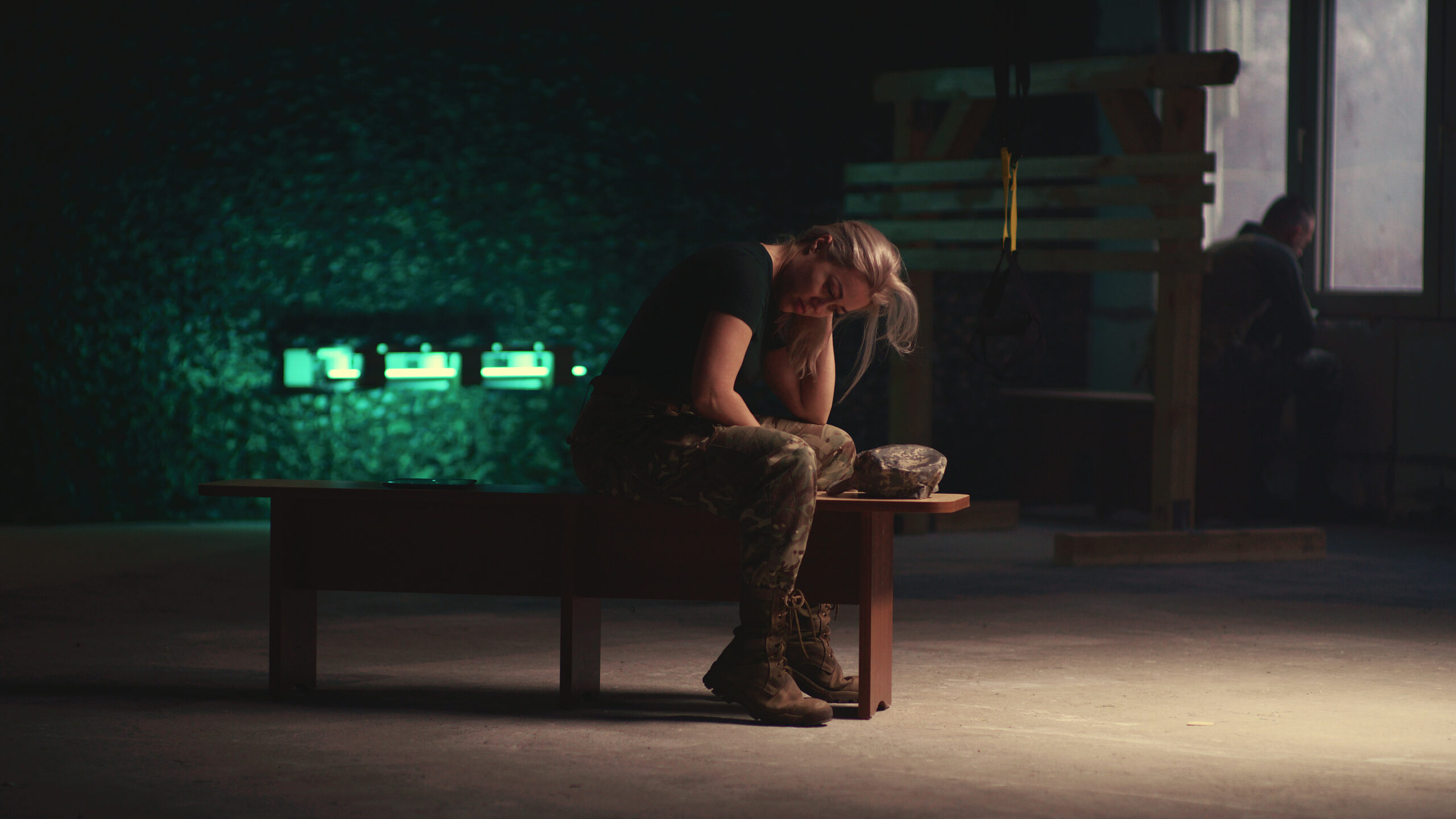By: Karen Shirer, Ph.D.
“Strong, brave, resilient”
“Passionate women with families”
“Sacrifice”
“Patriotic”
“Adapt to change”
These statements reflect the responses from the 321 participants in the Women in the Military: Special Considerations and Unique Challenges webinar held in late March for Military Family Service Providers. As participants entered the webinar, they were asked to respond to this question in the chat box “When you think of women in the military, what comes to mind?” They also noted that women who serve face challenges like being overlooked, difficulty balancing work, family and military responsibilities, and facing sexual assault and harassment.
More women are serving in the military and breaking ground. Since 2015, women, who have served in the military since 1775, gained access to serve in all roles including combat-related ones. What do we know about women who serve? What benefits and challenges do they experience? How can Military Family Service Providers (MFSPs) support women service members? The webinar addressed all three questions and are summarized here as well as participants’ thoughts and ideas from the chat.
What do we know about Active Duty women?
Demographic information gave a profile of women in the military including these key points:
● Men are more likely to be married than women as a group because more men serve in the military than women.
● Women are more likely than men who serve to be in dual-marriage military families.
● Women in the military are more likely to be divorced and to be single parents than men.
After learning about these demographics, participants were asked to describe what they found to be the most surprising difference between military men and women’s families. Here is a sampling of their responses:
“I’ve had male caregivers feel very uncomfortable in groups for military caregivers because most of the group is female.”
“I wasn’t necessarily surprised, but I was sad to hear that military husbands (or male partners) are essentially kicked out of spousal support programs because most are geared toward women.”
“The unfortunate lingering gender stereotypes that still exist.”
“… civilian husbands didn’t feel resources were geared toward them and they didn’t feel welcome at meet and greets…”
“The divorce rate of women in the military”
These responses highlight the challenges faced by women in the military and their spouses or partners. Another important question addressed in the webinar was whether or not women who join the military are unique from men who serve. The answer is “yes” and “no”. Women in the military are like men in that they have served since 1775 and do not want to give up family for military service. Women, like men, also find that the benefits of military service — salary, child care and medical coverage — are important.
A few key differences are that women:
● Are less likely to misuse alcohol; are more likely to be depressed
● 20 times more likely than men to be assaulted during military service
● Experience more work-family conflict
● Are more likely to be part of an ethnic minority group
Women’s military careers can look very different from men’s careers. Fewer women serve among the colonels, admirals and generals. Partially this is due to women separating earlier from the military then men. Women decide to leave for these reasons:
● Desire to start a family
● Being separated from family due to deployment and being unable to relocate with a service member spouse
● Pressure to prioritize one’s military career over spouse’s career or family
● Experience problems with work-family balance.
What benefits and challenges do active duty women experience as they serve?
When asked “What are key stressors facing women during and after deployment?” participants’ responses focused on sexual assault and mental health concerns. Comments included:
“Where to fit in after children have adapted to going to dad for everything during deployment”
“Leaving family behind, and reintegrating when they return. Missing milestones and risking attachment with infants/young children.”
“MST (Military Sexual Trauma) is also more common then I would like to 99admit so coping with that upon their return is incredibly difficult.”
“Keep in mind another issue facing women in the military is that there are very few in combat arms and infantry jobs, which is where the majority of most senior leaders in the Army are drawn from, which means more of a limit women will have when it comes to promotions, especially on the officer side to ranks of senior General officers.”
“I think the biggest stressor is balancing family and work life. Also keeping a healthy relationship with my spouse.”
“Active duty women don’t seek out those resources on average because there is a misconception about women in the military (too weak, too sensitive, cannot handle military life). To utilize those resources your chain of command would know and women try to show that they aren’t weak and don’t need that help.”
The above comments reflect the four areas of challenges for women in the military that were provided in the webinar second presenter:
● Combat stress: Research has documented the combat stress for women and their reluctance to utilize support resources that are available to them.
● Family separation: Research has shown that reintegration for women is difficult and often spills over into their parenting. Single mothers required “targeted efforts” to help them address the issues that arise with deployment.
● Military sexual trauma: MST continues to be well-documented from active duty women. Research has shown that it contributes to PTSD and other mental health issues. Experts believe the incidence of MST is much higher than documented because of women’s reluctance to report it.
● Health problems: Research indicates that women are more likely to commit suicide during deployment than men. They report more traumatic brain injury than men but often excluded from studies due to their small numbers. Depression, PTSD and alcohol misuse are health problems for both active duty men and women.
These challenges for women (and men) provide opportunities for Military Family Service Providers and the military community to offer more effective support services.
How can Military Family Service Providers (MFSP) support women service members?
“Women’s reluctance to utilize support resources (and) to shield loved ones from the burden of war. Our information suggests that the dominance of traditionally male-gendered support resources creates an additional barrier to accessing support systems.”
“Active duty women don’t seek out those resources on average because there is a misconception about women in the military (too weak, too sensitive, cannot handle military life). To utilize those resources your chain of command would know and women try to show that they aren’t weak and don’t need that help.”
“… would like to see how we can change the culture of making it ok for men to ask for and receive help whether as the stay at home dad or the service member.”
“A female service member support group for vulnerable members with guidance on how to address sexual trauma, safety plans and boundary holding psychoeducation.”
These participant chat comments came in response to the question: What can the military community do to support female service members and their families? To further the discussion, the final segment of the webinar identified these on-going challenges for women serving in the military:
● Reluctance of young women to serve in the military; lack of awareness of opportunities
● Slow progress on gender integration, and misconceptions
● Poorly-fitting equipment and gear
● Gender discrimination and sexual harassment
● Insufficiently flexible parental leave policies
● Need for better assistance for transition to VA care and civilian life
These needs resulted in more ideas from the webinar participants in the chat for better ways to support women who serve, including: connect women with IPV (intimate partner violence/ MST coordinators at the VA:
“Offer resilience training prior to deployment, for the military member and spouse, if applicable.”
“In my experience, becoming a mother in the military, I would have liked to have better family supports. I have seen many women struggling to be taken seriously once they have become mothers.”
“Establish many more civilian partnerships to educate about military education, culture, experience and dispel lots of negative myths, misconceptions. Also, the media needs to do more to promote real military positive images.”
“Educate the ENTIRE military community on the differences that exists between men and women SMs (service members) and that can actually be perpetuated within command structure.”
“Training of commanders who run family readiness programs for units. To be aware of special circumstances families face.”
“The focus of this is actively serving … and DoD is a very difficult institution to move. That said, branches are now developing “marketing departments” leading some to believe that they understand there are issues impeding their recruiting abilities. Family support and integration are at the top of their problems with both recruiting and retention.”
What can you do?
Here are several steps you can take to learn more about and better support women in the military and their families:
● Learn about women in the military and their families. The 2018 Demographic Profile of the Military Community and here (Rea, 2020) at the Military Family Learning Network are two resources with which to start.
● View the webinar for much more detail about women in the military and check out the resources on the event page.
● Collaborate with members of the military community and the broader community to begin a discussion on women’s challenges and to identify steps to provide better support. The 2018 Annual Report: Defense Advisory Committee on Women in the Services (DACOWITS) is a good place to start for these discussions.
● Look for opportunities to listen to active duty and reserve component women and their families. Include them in planning to better support them.
In the next year, the OneOp Family Transition is working with MFSPs and others to provide more education and discussion on the challenges of women in the military. Look for more opportunities in the future. Let us know if you’d like to be involved.
References
Defense Advisory Committee on Women in the Services. (2019, January 1). 2018 Annual Report. Retrieved from https://dacowits.defense.gov/Portals/48/Documents/Reports/2018/Annual%20Report/DACOWITS%20Annual%20Report%202018.pdf?ver=2019-03-11-115325-640 .
Rea, J. (2020) Unique Challenges faced by the Powerful Women who Serve in the United States Military. Retrieved from https://oneop.org/2020/03/14/women-in-the-military/.
U.S. Department of Defense. (2019). 2018 Demographic Profile of the Military Community. Retrieved from https://www.militaryonesource.mil/data-research-and-statistics/military-community-demographics/2018-demographics-profile
Writers Biography
 Karen Shirer, previous Associate Dean of the University of Minnesota Extension Center for Family Development. Karen is also the parent of two adult daughters, a grandmother, a spouse, and a cancer survivor.
Karen Shirer, previous Associate Dean of the University of Minnesota Extension Center for Family Development. Karen is also the parent of two adult daughters, a grandmother, a spouse, and a cancer survivor.
Photo source: IStock















